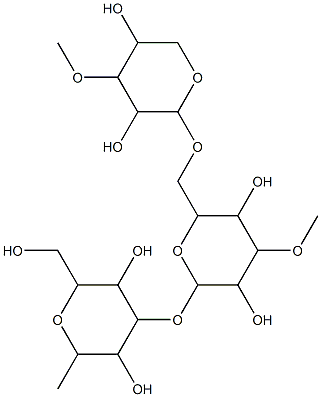Chemical Properties
Polyarabinogalactan possesses a soft, balsamic terpenic odor, reminiscent of fresh conifer resins and cones. It is a turpentine
type of a natural oleoresin. It occurs as a physiological secretion in the larch tree, Larix decidua, a conifer.
Chemical Properties
Dry, light-tan powder. Readily soluble in hot and cold water; both powder and solutions fairly stable. Combustible.
Occurrence
Reported found in the secretion of the larch tree, Larix deciduas
Uses
galactoarabinan (GA) is a multi-functional ingredient with humectant and exfoliating properties. In aqueous solutions, gA can deposit a clear film, creating or helping to create an occlusive environment, preventing transepidermal water loss and enhancing the functionality of a formulation’s active ingredients. In humid conditions gA acts as a moisture binder, and in dry conditions, it is able to retain moisture, further inhibiting moisture loss from the skin. Additionally, gA can improve particle dispersion and the uniformity of emulsion droplets resulting in a more stable emulsion and potentially more efficacious formulation, particularly in the case of sunscreens. In vitro and in vivo studies indicate possible benefit to the immune system given an ability to enhance Langerhans cell proliferation and cytokine production. gA has been shown to boost AHA exfoliation activity without increasing skin irritation, and it also exhibits its own exfoliant properties independent of AHA presence in a formulation, thereby helping reduce the appearance of fine lines and wrinkles. gA is a polysaccharide found in all plants and is the dominant sugar of the western larch tree.
Uses
immune stimulant, antineoplastic agent
Uses
Arabinogalactan is a gum, being the plant extract obtained from
larch trees. it is soluble in hot and cold water, the water solutions up
to 60% being fluid and above 60% forming a thick paste. it is stable
over a wide ph range and is relatively unaffected by electrolytes. its
limited uses include dressings and pudding mixes. it is also termed
larch gum.
Definition
A water-soluble polysaccharide extracted from timber of the western larch trees. It is a complex, highly branched polymer of arabinose and galactose.
Preparation
Natural turpentine is obtained from tapping or scraping the wounds on a variety of coniferous trees. Separating the essential
oil and solid content of crude turpentine makes pure gum spirits. The crude gum is heated, refined and separated by distillation
into gum spirits and rosin.
Biochem/physiol Actions
Dietary fiber that enhances immune system function by stimulating natural killer (NK) cell activity.
Safety Profile
When heated to
decomposition it emits acrid smoke and
irritating fumes.



